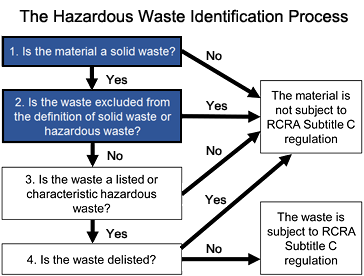The Ultimate Guide To Reclaim Waste
The Ultimate Guide To Reclaim Waste
Blog Article
Reclaim Waste Can Be Fun For Everyone
Table of ContentsFascination About Reclaim WasteSome Ideas on Reclaim Waste You Should KnowIndicators on Reclaim Waste You Should Know7 Simple Techniques For Reclaim WasteA Biased View of Reclaim Waste
Residential sewage waste refers to the waste and items from a residential septic container. The appropriate monitoring and disposal of domestic sewage waste call for liquid waste to be moved to a sewer treatment plant where the appropriate methods and devices are used to purify and dispose of waste.
Industrial waste often consists of possible risks, such as combustible products or a mixture of liquid and strong waste items, and requires an advanced and in-depth disposal process. The disposal of industrial waste commonly involves the filtering of waste prior to transportation to guarantee risk-free and appropriate disposal. Hazardous waste is created from by-products and drainage of commercial procedures and manufacturing.
This kind of waste can not use the exact same sewage administration transport or processes as septic or commercial liquids. The industrial waste administration procedure needs the examination and testing of liquid waste prior to it goes through the disposal procedure (liquid waste disposal). Runoff waste is the fluid waste that originates from runoff and excess stormwater in extremely inhabited locations or cities
Overflow waste can cause contamination and flooding if not handled effectively. Making certain correct waste monitoring can stop catastrophes and reduce environmental injury.
Everything about Reclaim Waste
Contact PROS Providers today to discover our waste monitoring and disposal services and the appropriate means to take care of the fluid waste you create.
(https://www.edocr.com/v/pd6avrzq/leonaube33101/reclaim-waste)Do you know what takes place to your water when you pull the plug, flush the commode or drain the washing equipment? No? Well, it's worth knowing. This supposed 'wastewater' is not only an important source however, after treatment, will be launched to our land, waterways or the ocean. Utilized water from bathrooms, showers, baths, cooking area sinks, laundries and industrial procedures is recognized as wastewater.

water utilized to cool equipment or tidy plant and devices). Stormwater, a kind of wastewater, is overflow that streams from farming and urban locations such as roofing systems, parks, yards, roads, paths and seamless gutters into stormwater drains, after rainfall. Stormwater flows unattended directly to regional creeks or rivers, at some point reaching the ocean.
The Main Principles Of Reclaim Waste
In Queensland, most wastewater is treated at sewage therapy plants. Wastewater is transported from domestic or commercial websites with a system of sewers and pump terminals, recognized as sewage reticulation, to a sewage treatment plant.
The Department of Natural Resources advises city governments about managing, operating and maintaining sewage systems and treatment plants. In unsewered areas, local federal governments might need homeowners to install individual or house sewer treatment systems to treat residential wastewater from commodes, cooking areas, washrooms and washings. The Department of Natural Resources authorizes making use of home systems when they are shown to be reliable.
The majority of stormwater obtains no treatment. In some new subdivisions, therapy of some stormwater to eliminate litter, sand and gravel has actually started utilizing gross contaminant traps. Wastewater treatment happens in four stages: Gets rid of solid issue. Larger solids, such as plastics and various other items mistakenly discharged to sewage systems, are gotten rid of when wastewater is passed through screens.
Wastewater then moves into large containers where solids resolve and are eliminated as sludge. Grease and scum are skimmed from the surface. Makes use of small living organisms referred to as micro-organisms to break down and eliminate remaining liquified wastes and great particles. Micro-organisms and wastes are included in additional info the sludge. Removes nitrogen and phosphorus nutrients that might create algal blooms in our rivers and threaten marine life.
The smart Trick of Reclaim Waste That Nobody is Discussing
Nutrient elimination is not readily available in all sewer therapy plants due to the fact that it calls for pricey specialized devices. It is ending up being extra usual in Queensland. Clear fluid effluent created after treatment may still include disease-causing micro-organisms. If this effluent is released right into rivers such as rivers or the sea, the micro-organisms will at some point pass away out.

This typically means wastewater needs to be dealt with or contaminants removed prior to it can be discharged to rivers. The majority of wastewater flows into the sewage system. Under the Act, regional governments carry out approvals and licences for eco appropriate activities (Periods) including wastewater launches that may have a neighborhood effect. The department carries out authorizations and licences to Ages involving wastewater launches that may have a regional or statewide influence.
The Single Strategy To Use For Reclaim Waste
Or else, examples are considered lab evaluation. Typically several tests are needed to develop the degrees of each of the different pollutants such as oils, heavy steels and chemicals in water. Surveillance provides factual information regarding water top quality and can confirm that licence conditions are being satisfied. The info acquired via surveillance provides the basis for making water quality decisions.
Report this page